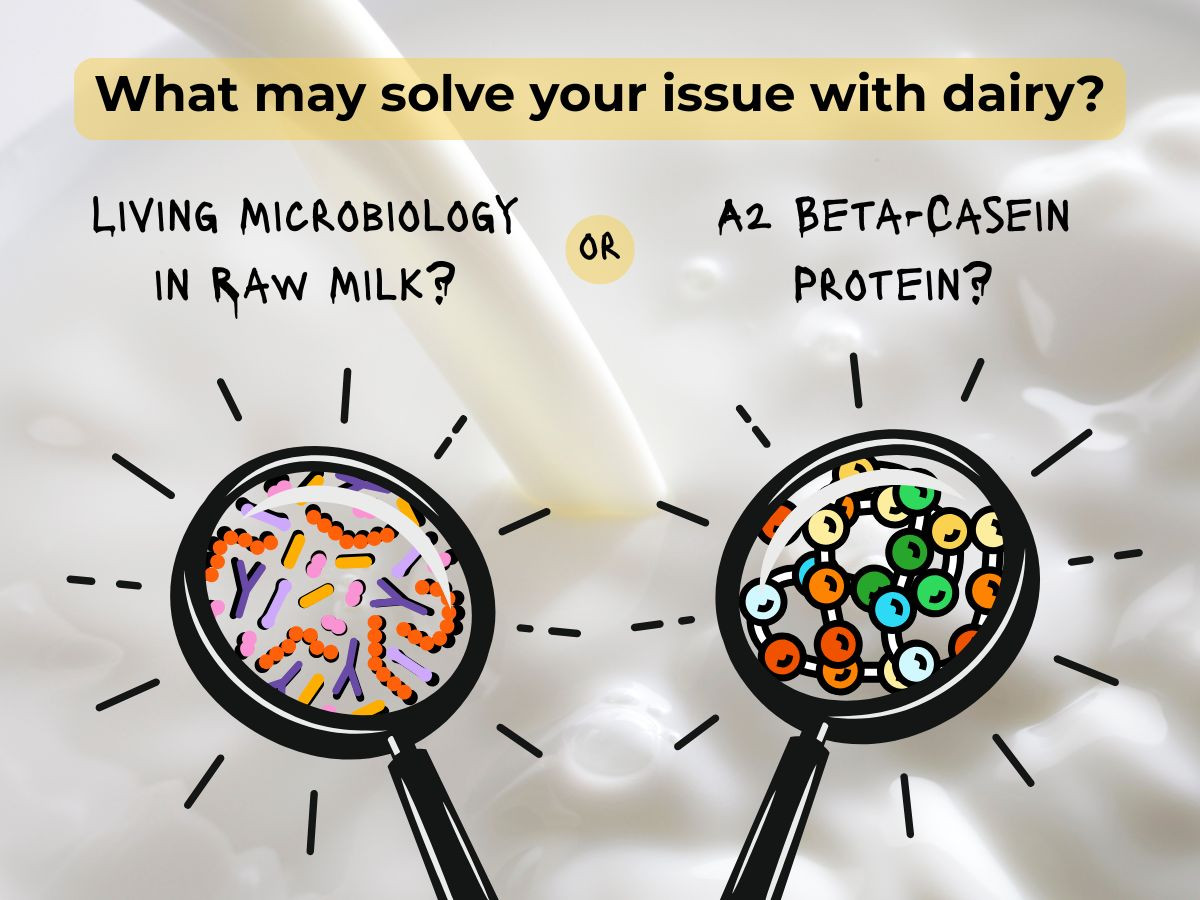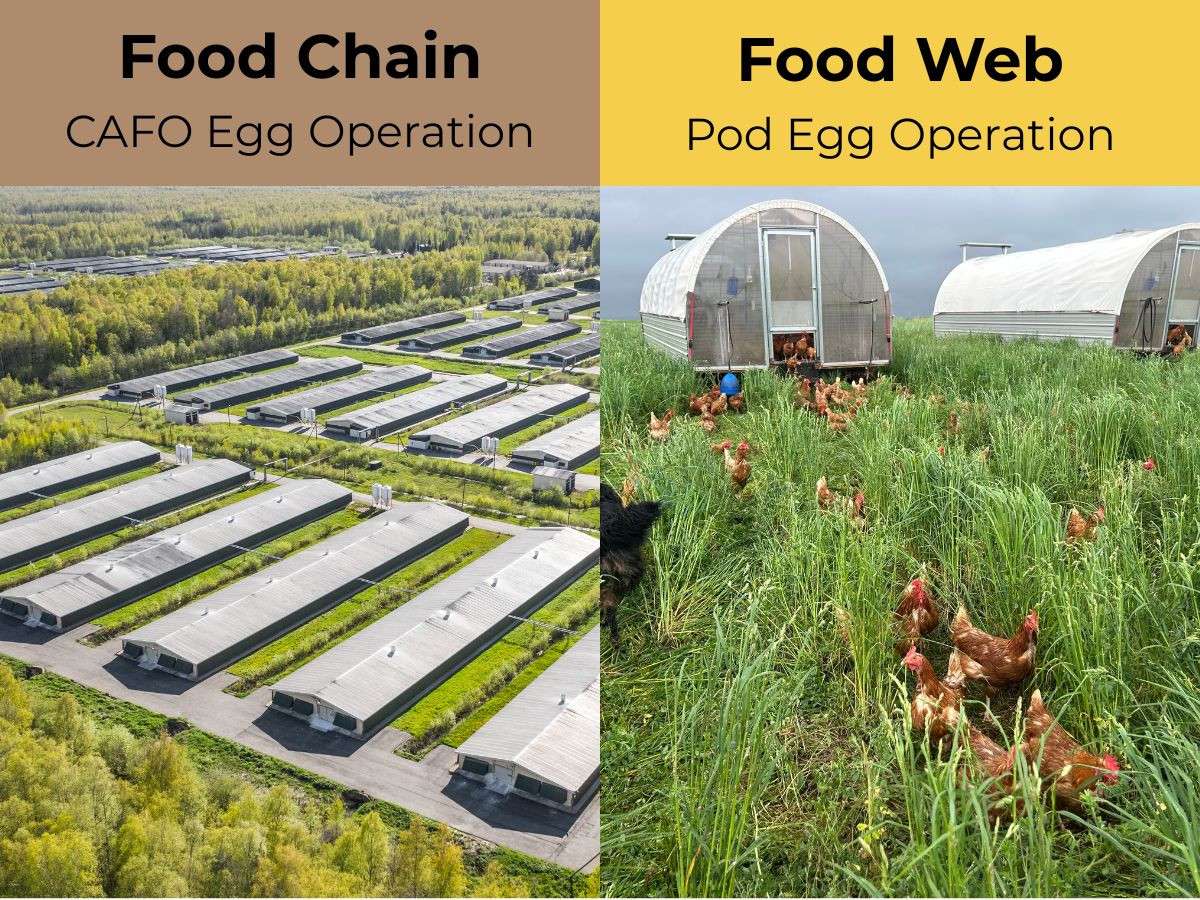Why a raw food diet for dogs and cats may be the best
posted on
December 16, 2022

At Miller’s Bio Farm, we believe in raising animals the way nature intended… and that includes pets. However, the modern conventional pet food industry doesn’t seem to agree. Let’s take a step back to understand why.
Domesticated dogs and cats are descendants of wild animals.
Dogs are descendants of wolves and would hunt for larger mammals like elk, deer, and rabbit. Cats are descendants of wildcats and would hunt smaller mammals like mice, rats, and voles as well as fish and birds like ducks, turkey, and small perching birds.
Dogs and cats wouldn’t make a fire and cook their prey. They would eat it raw. This is what their bodies are naturally designed to digest and what is biologically appropriate.
Thousands of years ago, dogs and cats were domesticated, bred to live closer to humans and have certain traits. Humans did this for a couple reasons: (1) They enjoyed their companionship; and (2) They provided a service for their caretakers.
Some dogs are fantastic protectors. They will bark to alert an intruder or guard livestock. On our farm, we have dogs to guard the chickens and turkeys. Some dogs are great trackers and retrievers, which can be a great help if you are a hunter or sailor.
Cats are wonderful hunters. They are natural pest control. By keeping the mice population down, they can help save your animal feed and human food and maintain a more sanitary environment. We have cats on the farm for exactly this reason.
Once dogs and cats became domesticated, they continued to hunt as their primary food source but would also be fed scraps from their caretakers’ meals - whole meats, fruits, vegetables, and grains.
Over the past hundred years, processed dry and canned foods have become the standard. This is for convenience and cost savings. However, it takes millions of years for significant evolutionary changes (dogs and cats are 99% identical to their wild descendants).
This trend has damaged the health of our pets. Just like with humans, with a conventional processed diet, nutrition is simply not as bioavailable. And, I mean, dogs and cats aren’t designed to digest soy protein, pea protein, potatoes, synthetic vitamins, etc. Dry food is a big concern and can lead to dehydration, urinary tract issues, and kidney disease (if your pet is not drinking enough water). This is a high concern for cats who are not naturally drawn to drink water.
A species-appropriate raw diet is what dogs’ and cats’ bodies handle best. It makes all nutrition bioavailable, supports a long life in good health, and can help heal from an array of health issues.
Raw diets are naturally low in carbohydrates and high in moisture. The idea is for meals to mimic what a wolf or wildcat would eat in the wild. A species-appropriate meal for most healthy adult dogs and cats can be 80% muscle meat and fat (with 10-15% fat), 5% liver, 5% other offal, and 10% soft bone.
Please keep in mind that, just like with humans, no pet diet is "one size fits all". The "foundation numbers" (80% meat, 10% organ, 10% bone) can vary for each pet's individual needs. Here are some examples:
- Bone percentages can vary from 6-15% for adult cats and dogs.
- Puppies and kittens need special care and their percentages are completely different and will change as they continue to grow. Puppies may need up to 20% bone.
- Some pets have health conditions, which require different diets. For example, a pet with pancreatitis will need to be fed less fat. Another example is a pet with kidney disease, which should be fed a "low phosphorous diet".
- Some pets will also require different sources of calcium (such as eggshells) for optimal health.
The amount you should feed will depend on your particular pet. How old are they? How much do they exercise? How fast is their metabolism? The latter two may change with the season. A good amount is usually 1.5-3% of an adult animal’s ideal body weight, fed in 2-3 meals per day.
Keep in mind that feeding rotationally (in other words, not the same thing every day or week) and supplementing may be necessary to reach optimum nutrient levels. Adding in some kelp, whole veggies, egg yolks, or raw dairy is great for adding extra nutrition, healthy fats, and probiotics.
You can purchase pre-made raw diets or make your own at home.
Premade is obviously easier, but making it at home has some benefits:
- Can be made in bulk quantities and frozen. When frozen for more than a month, this should also kill parasites, if there are any.
- Can be more cost effective when you source individual ingredients in bulk.
- You have complete control over quality and ingredients. This may be particularly important for picky eaters or pets with allergies.
If you’re currently feeding processed dry kibble or wet food, please don’t be stressed. There are easy ways to add some raw food or transition to a raw diet.
Here are some things to try:
- Put a raw egg yolk on top of the food.
- Pour some raw half-and-half or milk or yogurt over the food. Raw A2/A2 dairy can boost your pet’s health.
- Mix some of the scraps from the meat (or myoglobin, the red liquid left in the bag) left from trimming into their food.
- Pour unseasoned bone broth over the food. I know this is cooked, but it provides lots of moisture and nutrition. Make sure to avoid onion, which is toxic for dogs and cats.
You can continue to feed raw and cooked foods together. That’s perfectly fine. The more raw food you feed, the better your pet’s nutritional needs will be met.
Or, you can continue to add more and more raw foods to their meals until you are feeding 100% raw. A slow transition to raw is best. This will avoid shocking your pet's digestive system.
And, by the way, mixing up your pets’ food with some variety is excellent pet enrichment.
Just like for humans, there is no one diet that is appropriate for every individual animal. But, just like humans, quality matters. Be sure you are feeding your pets high quality and “human grade” foods.
By “human grade”, I don’t mean feeding your pets human food. I mean that you should feed them foods produced to the same standards as your food.
For example, the pet industry allows sick animals or animals that mysteriously died to be made into pet food. The human food industry does not allow that.
Another example is that the pet industry allows tainted raw milk with dyes and additives to be sold as pet food. The human food industry does not allow that. And, that’s why we go above and beyond to produce our A2/A2 pet dairy to the highest standards.
You might be wondering - what about e. coli and salmonella? The internet tells me that it’s a risk for my pet.
Keep in mind that your pet’s digestive system is different from a human’s. It’s shorter, food moves through it more quickly, and the stomach juices are much more acidic. All of these factors help neutralize potentially harmful bacteria. A healthy dog or cat with a normal immune system should have no problems.
One more thing to keep in mind - when you start adding raw foods to your pets’ diet, you may notice a change in their stool.
Because nearly 100% of the nutrients are bioavailable, pets on a raw food diet typically have smaller, firmer stools. And there may be some inconsistencies when you’re transitioning to a 100% raw diet.
I recommend just getting started. I know when I did, I was amazed at how my pets preferred the raw diet.
What do you feed your pets? Have you tried a raw food diet or will you consider it in the future? Have you figured out any tricks for making pet food at home?




